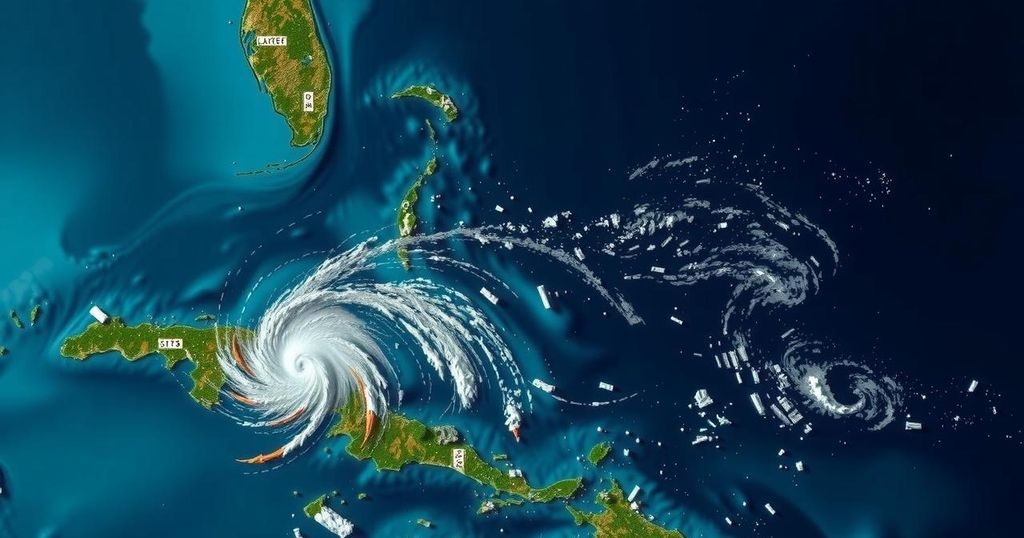Hurricane Kristy Tracker: Path and Impact of Category 4 Storm

Hurricane Kristy has become a Category 4 storm with maximum sustained winds of 150 mph. Positioned 845 miles southwest of Baja California, it is predicted to shift its movement direction over the next few days. Fluctuations in strength are expected, with a period of rapid weakening anticipated soon. Swells from the storm could lead to hazardous surf and rip currents along the Baja California coastline.
As of Thursday morning, Hurricane Kristy has intensified into a Category 4 storm, as reported by the National Hurricane Center (NHC). Positioned approximately 845 miles southwest of the southern tip of Baja California, the storm is anticipated to maintain a westward to west-northwest trajectory throughout Thursday, gradually shifting toward a slower northwestern route by late Friday. With maximum sustained winds reaching 150 mph, Kristy is forecasted to experience some fluctuations in strength today, although a notable weakening is expected to commence Thursday night or Friday. Despite the storm’s path remaining predominantly over open waters, significant swells generated by Hurricane Kristy are expected to impact portions of the Baja California peninsula’s west coast later this week. These swells pose a serious risk, potentially leading to life-threatening surf conditions and rip currents. The NHC has provided a forecast track that delineates the most likely path of the storm’s center. However, it is critical to note that this forecast does not encompass the full breadth of the storm or its potential impacts, as the storm’s center could deviate from the outlined cone up to 33% of the time. Furthermore, the NHC employs only the highest-performing predictive models to compile its forecasts. The situation concerning Hurricane Kristy remains dynamic, and continuous monitoring is necessary as the storm progresses. Updates will be disseminated as additional information becomes available.
Hurricane Kristy is currently classified as a Category 4 storm, which indicates its potential to cause significant damage. Such classifications are based on the Saffir-Simpson scale that measures a hurricane’s sustained wind speeds. The implications of Hurricane Kristy’s trajectory, particularly its lateral movement over the Pacific Ocean, are crucial in assessing risks for coastal areas around Baja California. The issuance of warnings regarding swells and rip currents serves to prepare local populations for potential hazardous conditions resulting from this natural phenomenon. Understanding the behavior of hurricanes in open water, particularly their capacity to generate conditions affecting distant shorelines, underscores the necessity of close observation and readiness among affected communities.
Hurricane Kristy, now a Category 4 storm, demonstrates considerable strength with expected fluctuations in intensity. Its trajectory primarily keeps it over water, though it poses significant risks through generated swells affecting the Baja California west coast. Continuous monitoring and accurate forecasting remain essential as the storm progresses, with significant impacts possible due to the dangerous surf conditions it may produce.
Original Source: www.usatoday.com







